9 Techniques for Mastering B2B Lead Nurturing to Grow Your Business
You’ve already put in the hard work with lead generation and qualification, but even the warmest leads don’t automatically convert. How can you guide them in the right direction? By nurturing them through the buyer’s journey and showing them the true value of your solution.

Jun 21 2024●5 min read

B2B lead nurturing is a long game that requires patience and a deep understanding of your potential customers. So, how do you nurture B2B leads? In this post, we’ll show you the top techniques to increase conversions and grow your business.
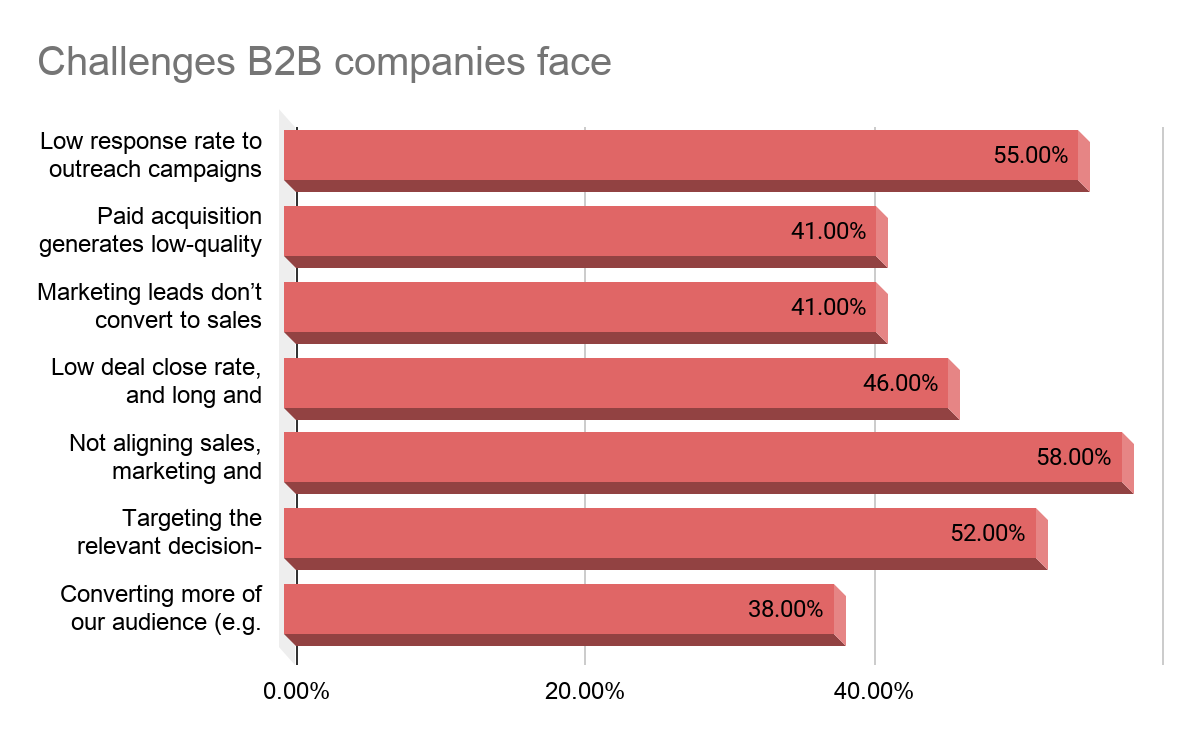
What is lead nurturing in B2B?
Lead nurturing is the process of building relationships with prospects who have shown an interest in your product or service. It’s all about guiding them toward conversion by establishing trust, listening to their needs and preferences, and creating personalized content and messaging.
This is especially important for the B2B sales funnel, which is more complex than its B2C counterpart—and often involves high-ticket purchases and multiple decision-makers. Because the customer journey is longer, B2B companies need to cultivate leads carefully at each stage.
The lead nurturing process takes place after lead generation (attracting leads in the first place) and lead qualification (determining which of them are most likely to become customers). It involves a strategic campaign of outreach across multiple channels and touchpoints.
The purpose of lead nurturing is to achieve higher conversion rates, but it also brings benefits such as a faster sales cycle, higher deal values, and improved ROI. Plus, it can help you to further qualify your leads and weed out those who are never going to convert.
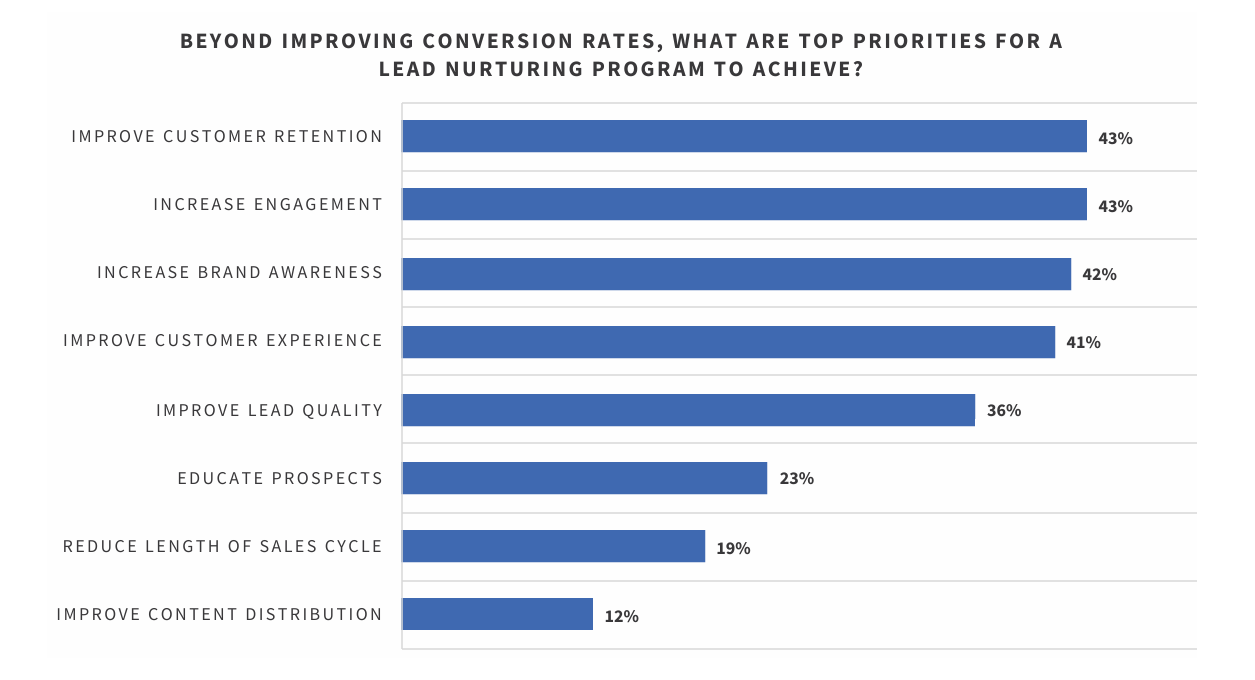
9 Techniques for mastering B2B lead nurturing
Let’s take a look at some best practices for B2B lead nurturing.
1. Put a clear strategy in place
Every successful campaign starts with a solid plan, especially when it’s a long-term strategy such as B2B lead nurturing. First up, identify your objectives and make sure they’re clear. Are you aiming for higher conversion rates? Put a figure on it—for example, a 25% increase over six months.
Set up a realistic timeline for the campaign and communicate expectations to everyone involved. List the resources you’re going to need, and come up with a budget (include a little leeway for anything unexpected).
2. Segment your leads
As you might imagine, leads at different stages of the sales funnel will need different levels of nurturing. By using segmentation, you can get organized and make sure that each type of lead receives the right communication.
Break down your list of leads into segments based on their position in the funnel (or you could use attributes such as their interests, behavior, and demographics):
- Nonqualified leads: Lead nurturing isn’t only about qualified leads—as we mentioned, nurturing can actually help with qualification. You won’t have too much information about nonqualified leads, and you don’t want to bombard them with messages, but you can send them a couple of emails to encourage specific actions.
- Action-qualified leads: These are leads who have already taken action, such as downloading a resource or requesting a demo, which gives you a starting point for follow-up.
- Marketing-qualified leads: MQLs are pretty warm but need a little more encouragement. For example, they might have downloaded your eBook, subscribed to your newsletter, or filled out an online form, so they have definitely shown active interest in your company. Send out more detailed product information and industry insights, promote your free trial, or suggest a call.
- Sales-qualified leads: SQLs are ready for the sales team to step in and get the deal over the line. Think about, for instance, those prospects who have attended your webinar, bought a lower-price or demo product from you, or have already contacted you several times expressing tangible interest in what you’re offering. Once they take the plunge and become a paying customer, you could create a sequence of welcome emails to enhance the onboarding experience.
- Lost deals: It’s important that you find out the reasons why someone dropped out of the funnel, so that you can try to entice them back with a special promo or freebie. However, if they steadfastly refuse to engage, it could be time to say goodbye and focus on more promising leads.
BONUS TIP: Don’t forget about existing customers! These people are already fans of your product or service, so they could be in the market for upselling or cross-selling (which is easier and less expensive than converting new leads).
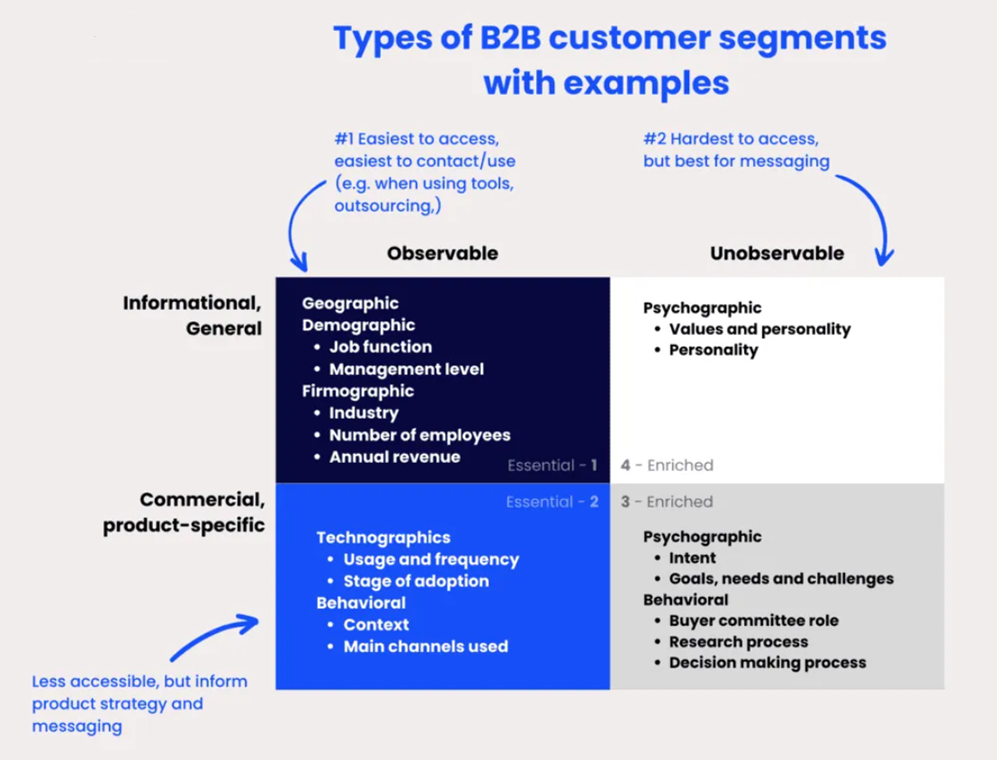
3. Create buyer personas
To be able to nurture B2B leads, you’ll need a thorough understanding of the target audience. What are their needs and pain points, and who will be the best fit for your product (and therefore more likely to convert)? After you’ve done the segmentation, it’s good practice to create buyer personas or Ideal Customer Profiles (ICPs) for each group.
Build out your ICPs using detailed research and interviews. This will tell you the key attributes shared by your best-fit prospects—such as industry, company size, revenue, preferences, and values. Then, you can take a more tailored approach to your communication.
4. Score your leads
Lead scoring is another method of organizing your leads, to help you target different groups with different outreach. You assign a score to prospects who take certain actions, such as giving you their email address or downloading a white paper, or those who meet your ICP criteria.
The scores are assigned according to your own points scale. For instance, you might give five points for a website visit, 10 for opening an email, and 50 for requesting a product demo. Decide the number of points that constitute a warm or cold lead. Focus heavily on the high scorers, but maintain the others with a lower level of nurturing.
5. Create targeted content
What is lead nurturing content? It’s targeted content that’s designed to encourage your leads toward conversion. With inbound marketing B2B, prospects become aware of your business through engaging content, but lead nurturing content picks up the baton and guides them closer to the end goal.
However you segment your leads—by funnel stage, scores, or buyer personas—you’ll need to produce valuable content for each group. For example, those in the consideration stage need informational content, but you can target SQLs with direct ads.
The aim is to educate and engage leads with expert insights before showing how your product can help them achieve their business goals. You’ll need to understand their needs, which you can do through feedback surveys and polls, discovery calls, and analyzing data using a marketing analytics tool.
It’s best to use an omnichannel approach that enables you to reach different leads in different ways. But remember to keep your messaging consistent across channels, and pay attention to your leads’ preferences so you can meet them where they are.
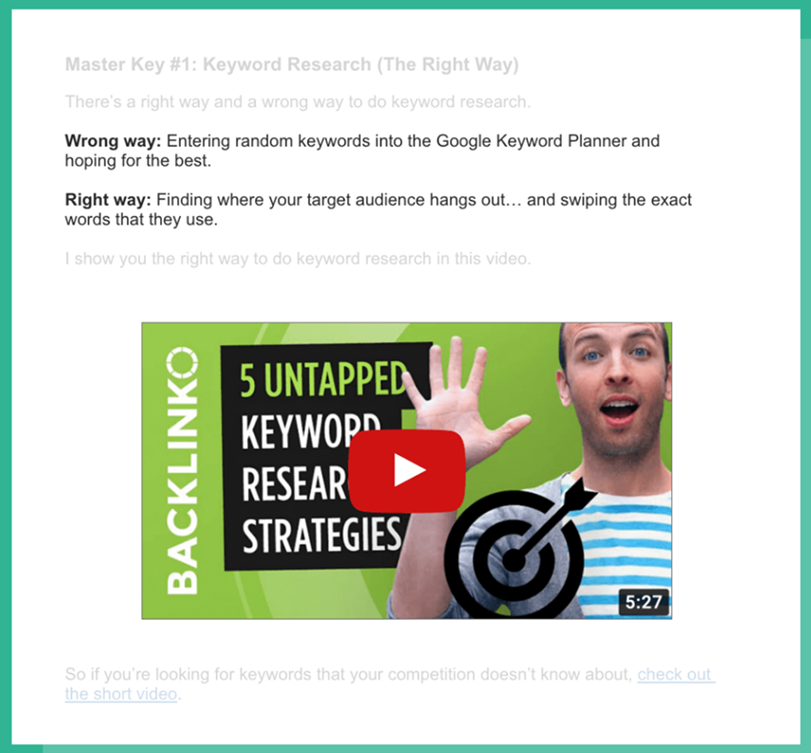
Email nurture
Email is an ideal tool for lead nurturing. You can share various types of content, such as links to helpful blog posts, industry news updates, or videos showcasing your product. Promotional offers like free trials and discounts can appeal at all stages of the buying journey. Consider the timing and frequency of your emails so that leads don’t feel overwhelmed.
In any email lead nurturing program, personalization is the key. We’re not just talking about addressing the recipient by name—you’ll need to match the content with their interests, goals, and challenges. That way, they’ll begin to see you as genuinely helpful, rather than suspecting that you’re only interested in their money.
Social media
Through your social platforms, you can follow and engage directly with individual leads. This can work better than public posting (although you should do that, too), because it allows for more personalization and connection. If they’ve posted something interesting and relevant to your niche, make sure you comment, like, and share. Join in online discussions with your valuable insights. Tools like Meet Alfred can help automate and manage these interactions, making your lead nurturing more consistent and efficient.
By building a presence all over the internet, you’ll have more chances of getting your name known in the industry. This also plays into your B2B SEO strategy and improves your SERP rankings, bringing you more traffic and more potential leads.
Webinars
Some B2B leads might not be ready to commit to a 1:1 sales call or meeting. This is where webinars or live Q&A sessions come in. You can showcase your product and your company values, while leads can get to know your brand and ask questions in real time.
As well as product education, you can take the opportunity to demonstrate your authority and expertise. Offer advice on topics that interest your audience, and discuss industry trends. You could invite fellow experts to speak, or even ask loyal customers to share their experiences.
If you record the webinars and post them on your website, other leads can view them at their convenience—and sales reps can share them via email. You could also create video snippets or blog posts using the discussions from the session.
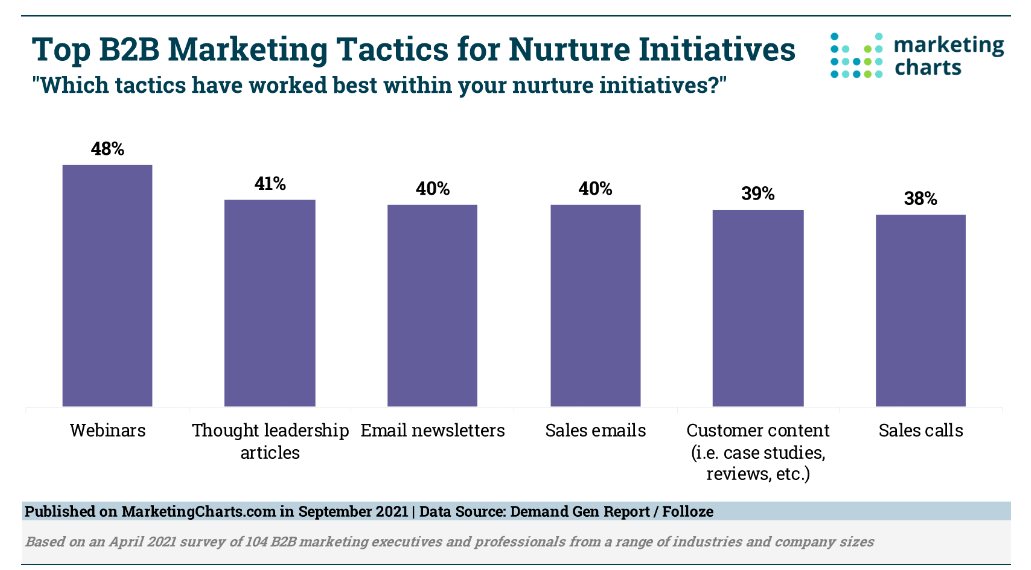
Case studies
Case studies are a great way to build trust, by showing leads how your solution has worked for customers in the real world. If you include metrics (such as “This agency saves 30% of time reporting to clients), leads can instantly recognize the value.
As well as placing testimonials and reviews from satisfied clients on your website and social media, it’s a good idea to set up a specific “Customer Stories” page where visitors can search by use case. Displaying logos from well-known customers also helps to build social proof.
6. Cross-team collaboration
You might think that only the sales team gets involved in lead nurturing—but to make it work, you need strong collaboration with the marketing department, too. You’re all working towards the same goal, after all.
Marketing teams produce the content that sales reps use in email marketing or meetings. But to create relevant content, they need input from the sales team because they’re the ones who actually talk to potential buyers. For example, salespeople have insights into common pain points and communication preferences.
It’s good practice to work together on creating ICPs and collaborate on your lead nurturing strategies to make sure that leads receive consistent information. You’ll also need to agree on the criteria for qualified leads and lead scoring, and put a process in place for handing over leads from marketing to sales.
7. Stay in touch
This is B2B, so most of your leads will take a while to warm up. They might only be in the initial stages of considering a solution, or they might require a ton of information to take back to the people who make the buying decision. Either way, you need to make sure your brand is top-of-mind when they’re ready to move forward.
That means keeping in touch, even if they’ve only displayed a hint of interest in your solution. Reach out via different channels and tempt them with personalized offers and incentives like access to exclusive content and discounts. Don’t be afraid to ask questions to find out more about their needs.
If a lead is already halfway along the funnel, use the info you’ve gathered to make them feel valued—for example, look out for news about their company and congratulate them on any achievements or anniversaries. You can also ask for feedback to see how you’re doing so far.
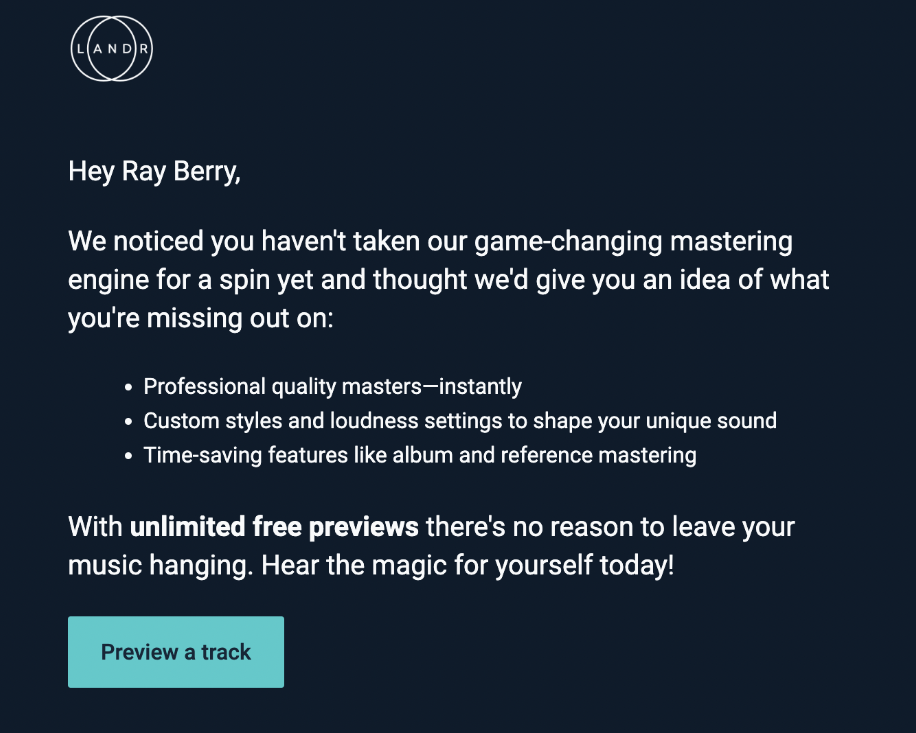
8. Track and measure progress
With any campaign, it’s essential to track your progress and identify areas for improvement. But you need to determine the metrics you’ll use, and what counts as success. For lead nurturing, you’ll be looking at things like email open rates and click-through rates, as well as overall engagement rates (the percentage of leads who interact with your content).
Tracking and measuring progress can be a bottleneck, especially if you collect data manually or use spreadsheets to draw insights. On the other hand, you don’t need any technical or data knowledge to use a pre-made metrics dashboard that comes alive with data for your KPIs, as soon as you connect your channels.
Of course, conversion rate is one of the most important metrics, but you should also pay attention to the number of leads that turn into sales opportunities and the time it takes for a lead to become a customer. Measure revenue generated from the lead nurturing campaign, and its ROI.
Every time you implement a new tactic or channel, track performance during and after implementation. Tweak your content, channels, and messaging where necessary, and use A/B testing to decide which type of content or messaging has the biggest impact.
9. Use the right tools
There are various tools available to improve your lead nurturing efforts. You can gather and share prospect information with a CRM system, plan your social media posts with a scheduling tool, and get deeper insights with a monitoring and reporting platform.
Email marketing automation is also a valuable investment, saving you time and boosting productivity. You can set emails to send when a lead takes a certain action—for instance, cart abandonment would trigger a reminder email, or signing up for a free trial would generate a welcome message.
Final thoughts
B2B lead nurturing is about building long-term relationships with your prospects, which means showing them that you’re genuinely interested in their challenges and goals. It’s important to segment the target audience and work with the marketing team to deliver relevant, personalized content.
Make sure you stay in touch with leads to nudge them in the right direction, adding value at all times. Don’t forget to track the progress of your strategy and make changes that will help you close the deal with more of your leads.

WRITTEN BY
Nick BrownNick Brown is the founder & CEO of Accelerate Agency, the SaaS SEO agency. Nick has launched several successful online businesses, writes for Forbes, published a book and has grown Accelerate from a UK-based agency to a company that now operates across US, APAC, and EMEA.